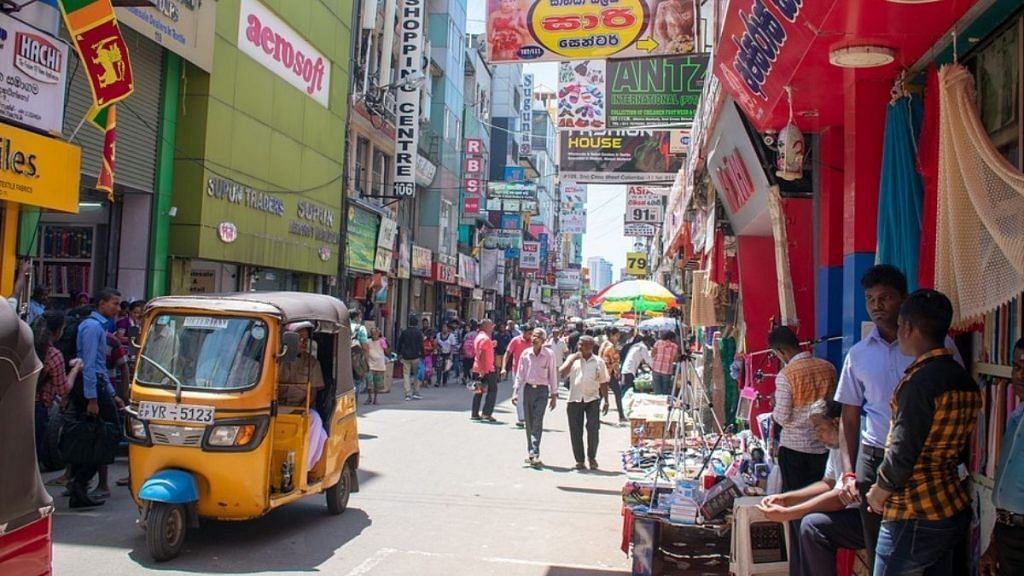Sri Lanka’s President Gotabaya Rajapaksa has a fetish for fiasco. The Indian Ocean island is a basket case for several reasons. Covid-19 decimated dollar earnings from tourism; the resulting increase in social spending ballooned public debt. Then came the war in Ukraine, worsening shortages of food, fuel and foreign currency. But the lion’s share of the blame must go to the strongman’s quixotic policies.
Rajapaksa has presided over the economy’s undoing: It began with an expensive tax cut soon after taking office in 2019; that was followed by an ill-conceived enthusiasm for organic farming, which destroyed production of both rice, the local staple, and tea, a crucial export; and then there’s the bizarre embrace of a Chinese-built tax haven as a ticket to growth. Sri Lanka now has Asia’s fastest inflation rate of almost 19%; widespread power outages; and nearly $5 billion in dollar-denominated borrowings due this year and next with just a little over $2 billion left in the foreign-exchange kitty. The administration threw in the towel Tuesday, announcing its intention to default on foreign debt.
Emblematic of this mess is the white elephant Rajapaksa got from China: the Colombo Port City project, envisioned as a playground for the rich who would earn in dollars and keep all of it. Companies located there could, at the discretion of the commission managing the city, also be exempted from paying taxes and levies. The 269-hectare patch of reclaimed land is supposed to position the commercial capital of Colombo as the most livable city of South Asia, a tropical paradise version of the Dubai International Financial Center, only twice as large. Never mind the sinking feeling taking hold in other coastal metropolises from Singapore to Jakarta to Manila because of rising sea levels.
The Port City is a costly fantasy, even if it does go on to generate a sixth of Sri Lanka’s current economic output by 2041, as predicted by an independent study. Although Chinese money is building it, a hub of residential, retail, commercial and financial activity that produces little revenue for the debt-ridden nation can’t possibly be the best use of its coastline or real estate. As the rescuer, the IMF must insist that businesses in the special economic zone pay their share of taxes.
So far, the Fund has been cautious about calling out the Port City for what it is — an outright folly. But it has questioned its overarching purpose. “The creation of a low-tax jurisdiction is likely to draw attention from the international community given a renewed focus on such matters,” the institution noted recently after a consultation with the island’s government. Sri Lanka is swimming against the tide: The tax-free United Arab Emirates is introducing a 9% levy on corporate profit from next year; and Singapore is exploring a “top-up tax” on multinationals to align its policies with the Organization for Economic Cooperation and Development’s global rules on base erosion and profit shifting.
The largesse could perhaps be justified if it was an efficient means of attracting investment and boosting living standards. But until the zone is functional, its linkages with the broader economy will remain largely restricted to pump-priming construction. Even after 2041, it’s unclear exactly how big a draw Port City will be. “Tax incentives,” as the IMF notes, “are often not a critical determinant for attracting investment and the revenue forgone could be better spent on human capital and infrastructure, while improving the doing business environment.”
The project was kicked off in 2014 when Gotabaya’s brother Mahinda, the current prime minister, was president. The family (until recently, there were several more of the Rajapaksa clan in the government) probably thought that Sri Lanka could exploit its strategic naval location to profit from playing China and India, the two large regional powers, against each other. China Harbor Engineering Co., which oversaw the reclamation, was given a 99-year lease on 116 hectares. The government’s own share of marketable land is only 62 hectares.
India has been extremely critical of a new Chinese enclave in its backyard. Its suspicions about Sri Lanka’s pro-Beijing tilt were aggravated when Rajapaksa booted India and Japan out of a deal to jointly rebuild a partially functional eastern terminal at the Colombo port, next to the China-backed southern terminal, of which China Merchants Port Holdings Co. owns 85%. The government decided to keep ownership of the eastern terminal in local hands, but still gave CHEC a role in construction. To soften up New Delhi, Rajapaksa awarded a 51% stake in a new western Terminal to India’s Adani Group, without any public tendering process.
Including the Hambantota port, leased to China Merchants Ports by a previous administration to ease its debt burden, and an elevated Colombo highway project handed over to CHEC, the small nation (population: 22 million) seems to have staked most — if not all — of its strategic assets. Yet, all it has to show for its participation in the China-India strategic rivalry is economic misery, broken public finances, and a currency in free fall even after the central bank raised interest rates by 7 percentage points in one day to steady the tumbling local rupee.
If it was a bad idea for tiny Sri Lanka to get drawn into regional geopolitics, taking sides in the U.S.-China cold war could be worse. Given the project’s belt-and-road connection, Washington would be wary if Port City is as lax about financial regulation as it is generous with letting the rich keep their money. A new Indian Ocean tax haven will raise eyebrows, but a potential hub for beating U.S. sanctions? That simply won’t do. —Bloomberg
Also read: HDFC-HDFC Bank move, a financial mega-merger that’s all in the family
